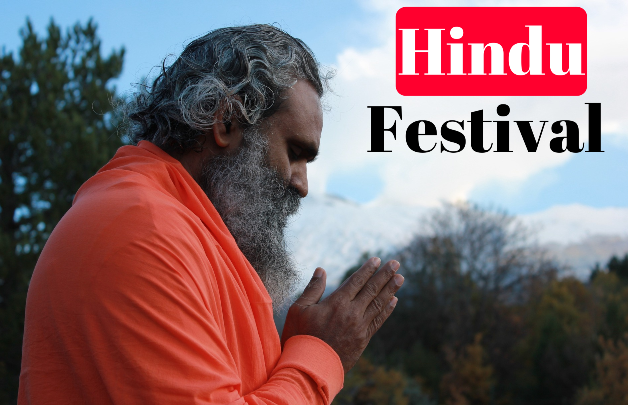Hindu Religion How Many Years Old

Hindu Religion How Many Years Old: Hinduism, with a rich tradition of mythology, philosophy, and diverse traditions, is one of the world’s oldest and most complex belief systems. Delving deeper into the origins of Hinduism is like embarking on a journey through the corridors of time, where myths intertwine with historical realities. In this blog post, we will explore the age-old question: How old is Hinduism?
Hindu religion how many years old
Ancient Roots:
The origins of Hinduism are deeply embedded in the mists of antiquity, making it challenging to pinpoint the exact date of its founding. Scholars and historians generally agree that Hinduism is one of the oldest surviving religions, dating back thousands of years. The roots of Hinduism can be traced to the ancient Indus Valley Civilization, which flourished in present-day Pakistan and northwest India around 3300–1300 BCE. [Hindu Religion how many years Old]
Vedic period (1500-500 BC):
An important stage in the development of Hinduism is the Vedic period, marked by the composition of sacred texts known as the Vedas. These hymns, rituals, and philosophical discussions form the foundation of Hindu religious thought. The Rigveda, the oldest of the four Vedas, is believed to have been composed around 1500 BC. During this era, transformational changes occurred in the social and religious landscape of ancient India, shaping the core principles and practices that defined Hinduism. [Hindu Religion how many years Old]
Epic narrative:
Hinduism derives most of its narrative richness from two epic poems, the Mahabharata and the Ramayana. The Mahabharata, with its epic Kurukshetra war and the Bhagavad Gita, is believed to have been composed over several centuries, with parts dating back to the 8th or 9th century BCE. The Ramayana, which describes the life and adventures of Lord Rama, is equally ancient, with its roots going back to the same period.
Upanishads (800-200 BCE):
Philosophical exploration of the nature of reality and the self reached new heights during the Upanishad period. Composed between 800 and 200 BCE, the Upanishads delve into deeper spiritual inquiry and introduce the concepts of Brahman, the ultimate reality, and Atman, the individual soul. These texts form the basis of Vedanta, one of the major philosophical schools of Hinduism. [Hindu Religion how many years Old]
Development of Hindu sects:
Over the centuries, Hinduism has embraced a remarkable diversity of beliefs and practices, giving rise to various sects and traditions. The Bhakti movement, which emphasized devotion to a personal deity, gained prominence around the 7th to 10th centuries AD. Shaivism, Vaishnavism and Shaktism became major sects, each with their own deities and rituals, which contributed to the multifaceted nature of Hindu worship.
Temple Architecture and Rituals:
The construction of temples became an important aspect of Hindu religious expression. Elaborate temple complexes decorated with intricate carvings and sculptures emerged throughout the Indian subcontinent. The Agama texts, which provide guidelines for temple construction and rituals, played an important role in shaping the architectural and devotional aspects of Hindu worship. [Hindu Religion how many years Old]
Medieval period and Bhakti movement:
Various Bhakti movements emerged in the medieval period, emphasizing personal devotion and a direct relationship with the divine. Saints and poets like Kabir, Ramanuja and Mirabai contributed to the development of regional languages and the democratization of religious practices. This period saw the spread of Hinduism beyond the Indian subcontinent, especially into Southeast Asia. [Hindu Religion how many years Old]
Colonial era and modern Hinduism:
The colonial era brought significant changes in the socio-religious scenario of India. The encounter with Western ideologies and the strengthening of British rule prompted a reassessment of Hindu identity. The 19th and 20th centuries saw the rise of socio-religious reform movements such as Arya Samaj and Brahmo Samaj, which aimed to purify and revive Hindu practices.
In conclusion, determining the exact age of Hinduism is a challenging task due to its antiquity and continuous evolution. From the foundational hymns of the Vedas to the philosophical inquiries of the Upanishads, the narrative richness of the epics and the diversity of sects and traditions, Hinduism has stood the test of time. It is not just a relic of the past but a living, dynamic tradition that is adapting and evolving in the contemporary world. The age of Hinduism spans millennia, weaving a tapestry that reflects the profound spiritual and cultural legacy of one of the world’s oldest and most enduring belief systems. [Hindu Religion how many years Old]

 Search 10000+ Jobs | Any Qualification | Fresher | Full time Jobs| Part Time Jobs And More (Check Now)
Search 10000+ Jobs | Any Qualification | Fresher | Full time Jobs| Part Time Jobs And More (Check Now)




